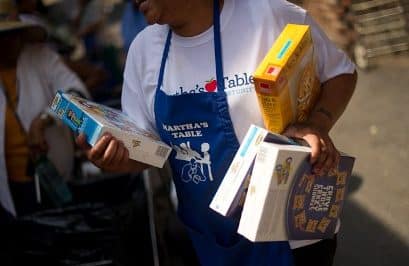
Tuesday, November 16, 2010 at 11:52 AM

Tuesday, November 16, 2010 at 11:52 AM
One in eight households in the District of Columbia struggled with hunger during the 2007-2009 period, according to new data released by U.S. Department of Agriculture (USDA).
Nationally, more than 50 million people lived in households that were food insecure in 2009
– up from 49.1 million in 2008 and 36.2 million in 2007.
Among the 12.9 percent of people in District households considered to be food insecure during the 2007-2009 period, 4.5 percent were living in households that were considered to have “very low food security.” People that fall into this USDA category had more severe problems experiencing hunger and cutting back or skipping meals on a more frequent basis for both adults and children.
D.C. Hunger Solutions noted, however, that the state numbers are averages of years from both before and after the start of the recession. They therefore almost certainly understate the extent of food insecurity in Washington, D.C. in 2009 and, in all likelihood, today. To report food insecurity in each state, USDA uses three-year averages to compensate for limited sample sizes and give a better estimate of the number of households experiencing hunger – thus the state data are an average for 2007-2009. 2008 was the first year of the recession, and unemployment did not rise sharply until the second half of that year.
For a current snapshot of hunger during the recession, D.C. Hunger Solutions points to data on food hardship in 2009 released by the Food Research and Action Center earlier this year, which show nearly 20.8 percent of people in D.C. reported an inability to afford enough food in 2009. The data were gathered by the Gallup-Healthways Well-Being Index project, which has been interviewing almost 1,000 households daily since January 2008. People were asked, “Have there been times in the past twelve months when you did not have enough money to buy food that you or your family needed?”
Martha’s Table’s Food & Nutrition program has seen an increase in demand for emergency food services over the past year. In fact, demand has tripled since 2009. We are meeting this increased need with quality partnerships with other social service organizations and donations from the community.
For more information on Martha’s Table’s emergency food services and how you can help,
please visit our Food & Nutrition Program page.
 News
NewsMay 1, 2024 at 6:00 PM
 Connected
Connected
0 New comments